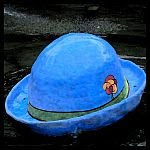2010 Summary - Chinese IPO's
posted by The Traveller on Sunday, December 26, 2010
2010 saw a total of 41 companies from mainland China going public in the U.S. via a regular Initial Public Offering (IPO). More than half (22) of those IPO's took place in the fourth quarter alone. As a group, those Chinese offerings have been very successful. The average return on the first day of trading was 16%, and year-to-date the average IPO investor is sitting on a 20.9% return from the offering price.

YouTube-clone Youku.com (YOKU) was the most successful Chinese IPO on the first day of trading, with a return of 161.25%. The stock climbed as high as 250% above the IPO price before retreating again, but year-to-date it is still up 170.85%, and higher than the close at its first day. YOKU is a huge bet on the growth of the Chinese internet and consumer markets. As Google's YouTube is blocked in China, its market there is up for grabs. But keep in mind that the race is just at the beginning, and many things could go wrong for Youku from here. The company is not yet profitable, and I wouldn't be surprised to see its stock price cut in half in 2011, even if the company reaches the lofty goals set by investors.

Goldman Sachs (YOKU, CIS, SFUN) and Deutsche Bank (HSFT, SFUN) dominate as underwriters of the year's most successful IPO's. IT outsourcing company HiSoft Technology (HSFT) took the top spot this year, steadily rising since its IPO for a year-to-date return of more than 200%. Even a secondary offering, priced at $25 in December couldn't hurt the stock, as it reclaimed the $30 mark right before Christmas. The company guided for diluted earnings per ADS of $0.83 for FY 2010, which puts its current P/E-ratio at an ambitious 36.5. The market apparently believes that HiSoft's explosive growth supports this valuation.

But not everything has been so bright for Chinese IPO's this year. In fact, 20 out of 41 stocks that went public in 2010 are now trading below their offering price. The list of worst performing stocks is dominated by low-profile underwriters as Broadband Capital for China Hydroelectric (CHC) and Anderson & Strudwick for Dehaier Medical Systems (DHRM). Number three on the list is Credit Suisse IPO Mecox Lane (MCOX), an internet retailer that started out well with a 56% gain on the first day of trading. The stock came under heavy pressure when U.S. shareholders sued the company and its underwriters for not disclosing shrinking margins in the IPO prospectus.

